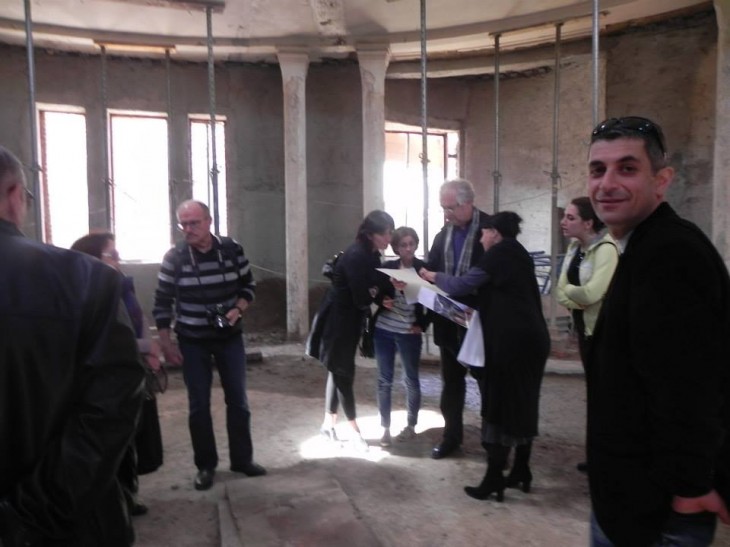
10.04.2014 9th International Workshop
Opening by Ms. Tsintsabadze
Welcoming speech by Mr. Bochoidze
Lecture by Jon Braenne: Restoration of an early 19th century wooden storehouse. Principles and practice
Concerned the restoration of a storehouse – part of a farm located near Lillehammer. The building has been abandoned for 10 years, while being used for 150 years before. The roof construction is a saddle roof construction, which was damaged.
1st phase: cleaning from vegetation, cleaning from waste, documentation of all boarding inside and outside.
The original wooden species of wood were used, also blacksmith made nails.
Documentation of every change is very important. The principle of “do as little as possible” was used and the least was replaced.
The total cost of the restoration project was 25.704 Euros.
Co-financing was made possible through grant from municipality and the fund for conservation. Own contribution was 9.972 Euro.
2nd presentation: Research on traditional linseed oil paints available on the Scandinavian market
Lecture concerned use of linseed oil paint on heritage sites and explained the process of testing paints from 21 different producers. Evaluators evaluated color, drying, gloss, texture and other specifications on the samples. The directorates for cultural heritage will evaluate the samples for 10 years. The criteria are: 1. Fungi attacks, algae and moss attacks, cupping and flaking, need for retreatment. It is very ecological and as it covers a larger area than chemical paint, it becomes cheaper. It is important to start with little oil in the first layer and add more oil. It is applied with a thin layer and with a brush.
Discussion went on regarding the use of linseed oil paint and its restoration.
Lecture 3 concerned the production and the use of pine tar on historical structures.
Maia Chaduneli – Caparol
Presented about Histolith – brand for monuments of architecture. They are resistant to weathering and consist of a variety of lines. Disboxan 450 was explained also as a solution for impregnating against salination.
Mr. Braene talked about a Norwegian paint company – the largest in the world, Jutun, which used to introduce new product every year, but now it is out of the market. Important point is that the outside layer has to disappear with time and should not stay for a long time and the material has to breathe.
Mr. Hovhannisyan described his work in Armenia on working on murals of Mina Avetisyan.
Afternoon Discussion:
Final discussion concerned the possible establishment of a training center offering series of workshops and training seminars. This issue is of high demand in the Caucasus. Conservation of heritage is threatened by the fact that the issue is questioned by the government of Georgia. The trainings should concern mainly the policy issues but should not overlook practical issues like the ones raised during this workshop. The workshop today was attended by a few students who all lack practical knowledge and skills in modules like use of traditional material, etc.
Concepts of Introductory seminars in different fields should be discussed. It should be a training for young professionals, capacity building for mid-career and young professionals.
Maia Chaduneli talked about a past Charity Project through which Caparol was teaching youth in Rustavi painting skills. Training for teachers in vocational schools. One or two seminars did not have much effect. We had the idea to introduce the teaching at the Academy of Fine Arts, but it is not an easy process. Caparol has an online book for teaching the use of Caparol products. The manual could be useful for vocational schools, etc. The training has to have regular character.
Jon introduced an idea which takes place in Roros museum. Every last week of August a week of craftsmanship is organized. Four courses are taking place, wood, brick, blacksmith work and traditional surface treatment. The museum site is hosting all these courses. Participants of the week are historians, art historians from RA, painters, boat builders, conservationists, etc. Each year we teach basic knowledge, every year the topics are different, like dry stone masonry, lime kiln, wood house building, lime repairs, making of paint and painting old buildings, etc. The courses are led by craftsmen with great knowledge. Sometimes all have common lectures and participants can visit other courses. During the craftsmen’s days no modern tool is used in the museum. We refer to modern materials, but use the traditional ones. Every group has 10 to 20 participants. The cost is low. The attendants bring their own tools. The costs concern the travel and lodging at Roros and 5 instructors.
J. Braenne: It is important to bring together architects, craftsmen, museum people, and managers to do things together. In Georgia, in comparison to Norway there is a breach in traditional knowledge and skills. Some craftsmen in Norway were also gone and tradition died out. We started in one corner. In 1968 only one decorative painter existed in Norway and we used him every time and some things we needed to learn from Sweden. The situation today in Georgia compares to Norway in 1950ies. We have to sort out what is the most important point to focus on. How to find knowledge, develop it and give to others. The knowledge is there. It all costs money, but we should decide to come up with priorities. If the knowledge is not there, the first thing may be should be to find the people and then find the ways to transfer the information to a larger amount of people. Not only carpenters have to be trained by carpenters, but also museum directors, policy makers have to be involved. Examples of such training by Nowegian carpenters were mentioned undertaken within the G. Chitaia OAM rehabilitation project. The interest is still there from the Norwegians, what is left is to convince the Georgian government to place such a request.
Lia Bokuchava from ICOMOS Georgia suggested a Showcase Restoration House Project – an open house where students can learn by doing. May be find a small house in the center of the city where everyone can see what is happening. Open it for the public to come and see the conservation process. The effect is very good.
2nd day:
The first half of the day was dedicated to field visits on ongoing restoration projects. In the afternoon a presentation was made by Mr. Braenne and Ms. .Bokuchava.
On the second day a more detailed discussion was held on the idea of a new project idea – the showcase restoration.
ICOMOS Georgia representatives described the challenges faced by the area within the Betlemi project, including the commercial interest and pressure.
- House on Betlemi Street 3 was mentioned as one option for carrying out the discussed project idea. This house has structural stabilization problems, also timber is damaged through paint and with time, its restoration is becoming more expensive;
- Another option is the house below the terrace which is also privately owned and is almost demolished. It is an important part of the complex; it bears the weight partially of the terrace and its demolition threatens the stability of the terrace. The fence is now declining.
Wrong and inadequate methodology used in the restoration of the area next to Betlemi quarter was also discussed.
J. Braenne suggested applying for a new grant with very distinct proposal and ideas. He commented on Lia’s proposal of a showcase house restoration as very positive. He suggested starting restoration of a house and using it for training of carpenters, masons and all the variety of craftsmen. This way the house is also saved and craftsmen trained. Since all studies on these houses already exist, it is an asset to the preparation and justification of the proposal. Most important aspects of the project will be:
1. Saving a house
2. Teaching – Learning by Doing; Norwegian and Georgian experts training the youth;
3. Preparation of guidelines for Tbilisian house rehabilitation
As some crafts are dying out altogether, the project can gain more significance. The Norwegian government spends a lot of funds for teaching youth old crafts.
4. The project will have visible results and will build a core of good craftsmen. J.Braenne promised to give recommendation to this project idea and suggested to choose a small house where works can be finished and results can be visible.
The participants also summarized the impressions from the site visits and approved the work in the Machabeli House 17 doorway; apart from the color which could have looked better in lime color.
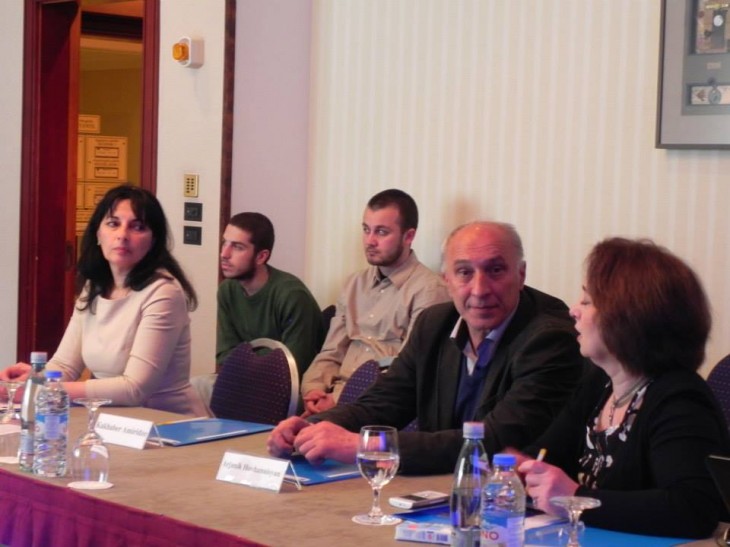
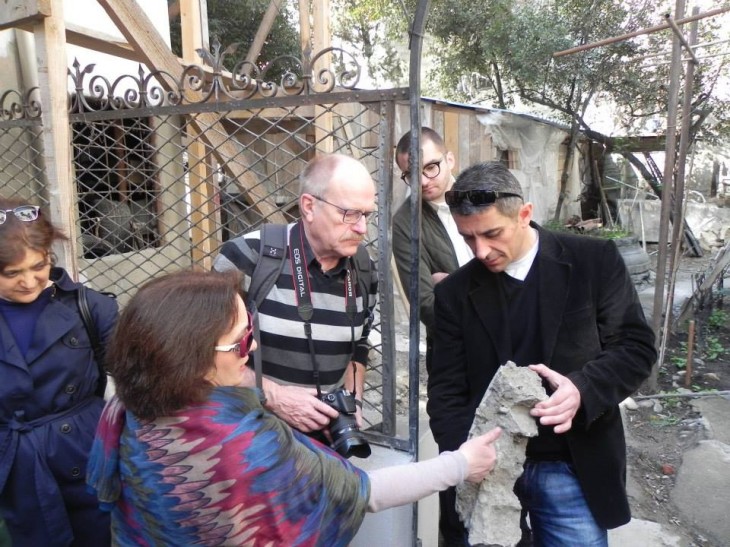
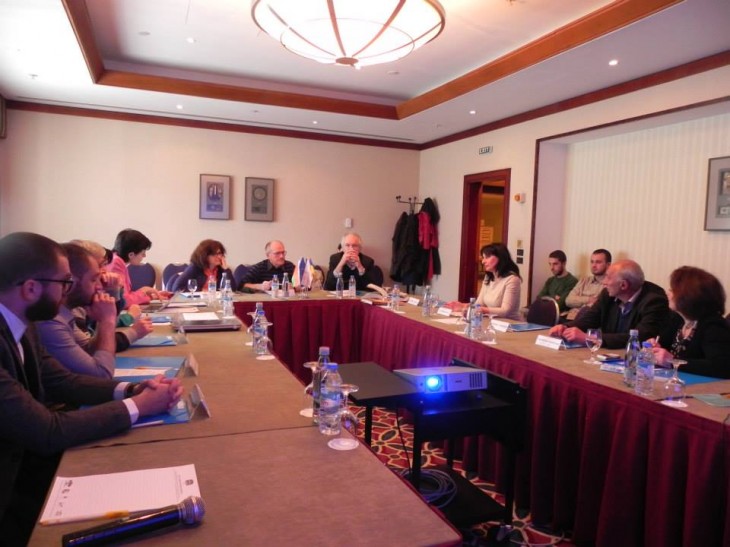
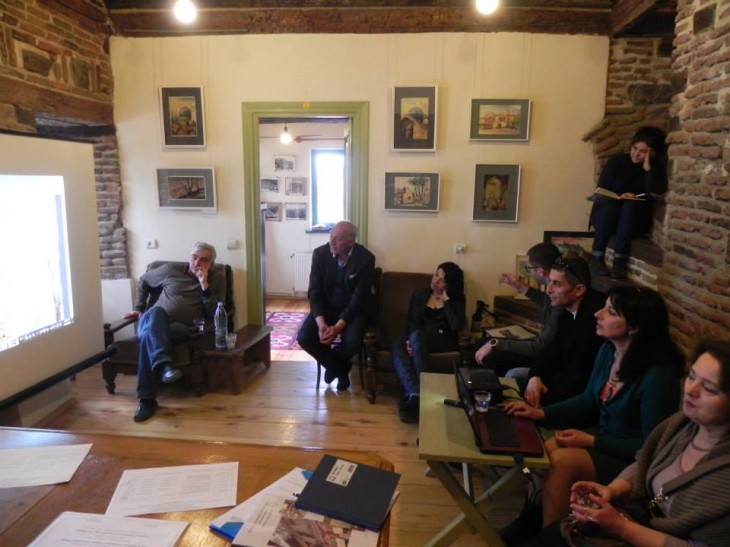
|
Heritage Conservation Regional Network Journal

|
|
Introducing_Young_People_to_the_Protection_of_Heritage_Sites ENG
Details »
|
|
Networking |
Policies |
|
|
Public awareness |
Workshops |
|
 The project is funded by the
The project is funded by the European Union
EU is not responsible
for the content of this website
 |
 |
 |
 |
 |
 |
 |
 |
 |
|
RCCHD Project: Office 16b, Betlemi ascent, 0105 Tbilisi, Georgia Tel.: +995 32 2-98-45-27 E-mail: rcchd@icomos.org.ge |
© 2012 - Eastern Partnership Culture Programme |





